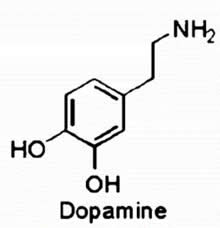Andrea Giordano
INTRODUCTION
Pathological gambling shares many features with drug addiction, such as the development of euphoria, craving and tolerance.
Research has suggested possible genetic or neurobiological links between gambling and substance use disorders. For example, just like individuals with drug dependence who develop tolerance for the drug and, therefore, need higher doses of the drug to experience the desired mood or feeling, those with gambling problems might find that they need to gamble increasing amounts of money to achieve the same level of excitement experienced at lower levels of wagering. When such an individual attempts to reduce or stop gambling, he or she might experience symptoms of withdrawal. This process is called neuroadapation.
Depending on our own characteristics (our inherited neurochemical make-up etc.) we may be more susceptible to the illness of gambling addiction.
Gambling problems have been examined in some different realms: biochemical, functional neuroimaging and genetics.
Related link:
Gambling and the Brain: why Neuroscience research is vital to Gambling research
BIOCHEMISTRY
Noradrenaline: Studies performed during the 1980s compared men with pathological gambling to those without and found higher levels of noradrenaline or its metabolites in urine, blood or cerebrospinal fluid samples in the former. During gambling, heart rate and noradrenergic measures become elevated to a greater degree in men with gambling problems as compared to those without. Noradrenergic activity influences prefrontal cortical function.
Serotonin:Serotonin is implicated in emotion, mood and cognition. Low levels of serotonin, which have been observed in individuals with pathological gambling habits may result in
increased motivation to satisfy urges, impairment in inhibition or reward processing, or a
combination of these factors.
Dopamine:The mesolimbic reward system is thought to play a crucial role in the development and manteinance of gambling addiction, and several lines of evidence converge toward the hypothesis that gambling addicts have a deficient reward system and that frequent gambling is in attempt to compensate for this deficit.

Organism try to mantain a homeostatic baseline level of dopamine in the ventral striatum,which in normal people can be maintained by weak reinforcers found in everyday life. In constrast, in pathological gamblers, natural reinforcers are not strong enough for dopamine to reach and maintain this homeostatic baseline level. Thus, organisms seek additional, stronger reinforcers, such as drugs of addiction or gambling, to compensate for the lack of activation. One mechanism of addiction is “reward deficiency syndrome,” a state of chemical imbalance involving multiple genes that causes an individual to crave environmental stimuli to compensate for the imbalance. Dopamine agonist therapy for Parkinson's disease, caused by a dopamine production deficit in the substantia nigra, was associated with potentially reversible pathological gambling, and pramipexole was the medication predominantly implicated. This may relate to disproportionate stimulation of dopamine D3 receptors, which are primarily localized to the limbic system.

Endogeneous opioids: Endogenous opioids are opiate-like substances, such as endorphins, that function as neurotransmitters. They are produced naturally within the body and contribute to feelings of well-being and lessen feelings of pain. Individuals with altered opioidergic systems
might have greater difficulty controlling desires to continue an addictive behavior due to
intense euphoric feelings experienced after engaging in rewarding behaviors.
Glutamate: Glutamate, the most abundant excitatory neurotransmitter, has been implicated in motivational processes and gambling addiction.
Stress and stress hormones: Changes in cortisol have been related to impulse control disorders. Significantly higher levels of cortisol have been observed in individuals after participating in gambling activities.
Related links:
The neurobiology of pathological gambling and drug addiction: an overview and new findings
Gambling and the Brain: why Neuroscience research is vital to Gambling research
Pathological Gambling Caused by Drugs Used to Treat Parkinson Disease
Pathological Gambling is linked to reduced activation of the mesolimbic reward system
FUNCTIONAL NEUROIMAGING
Functional magnetic resonance imaging (fMRI) has shown differences in VMPFC (ventromedial prefrontal cortex) function in PG (pathologic gambling): a relatively diminished BOLD signal change in left VMPFC following the presentation of the stimuli.
VMPFC is implicated in the processing of risk and decision making. This inactivaction (and also of the insula, precuneus and posterior cingulate, that were activated during error processing) makes the gambler unable to quit despite adverse consequences emerging from the addiction.


A similar pattern of diminished activation was observed in Pgers d, in comparison to control subjects c in the ventral striatum, a brain region with dopaminergic innervation and which is widely implicated in drug addiction and reward processing.
The mesocorticolimbic dopamine system stimulates the ventral striatium.
These findings suggest a complex network of brain regions is activated during gambling and related
behaviors, and that activity within certain aspects of these regions can distinguish pathological gamblers from nonproblem gamblers.

Related links:
Pathological Gambling is linked to reduced activation of the mesolimbic reward system
Gambling and the Brain: why Neuroscience research is vital to Gambling research
GENETIC VULNERABILITY
Family studies have demonstrated that pathological gambling subjects have elevated rates of firstdegree relatives with substance use disorders, suggesting a possible shared genetic vulnerability between pathological gambling and other addictions:the involved genes are the ones relating to neorepinephrine, serotonin and dopamine neurotransmitter systems.
Related link:
Gambling and the Brain: why Neuroscience research is vital to Gambling research
CONCLUSION
The increasing phenomenon of gambling, which interfers with interpersonal relationships and negatively affects financial status, has a neurophysiopatologic component. The always better knowledge of this element, in future, could lead to new treatments, targeting the resolution or the improvement of this social problem.
Related link:
Pathological Gambling is linked to reduced activation of the mesolimbic reward system